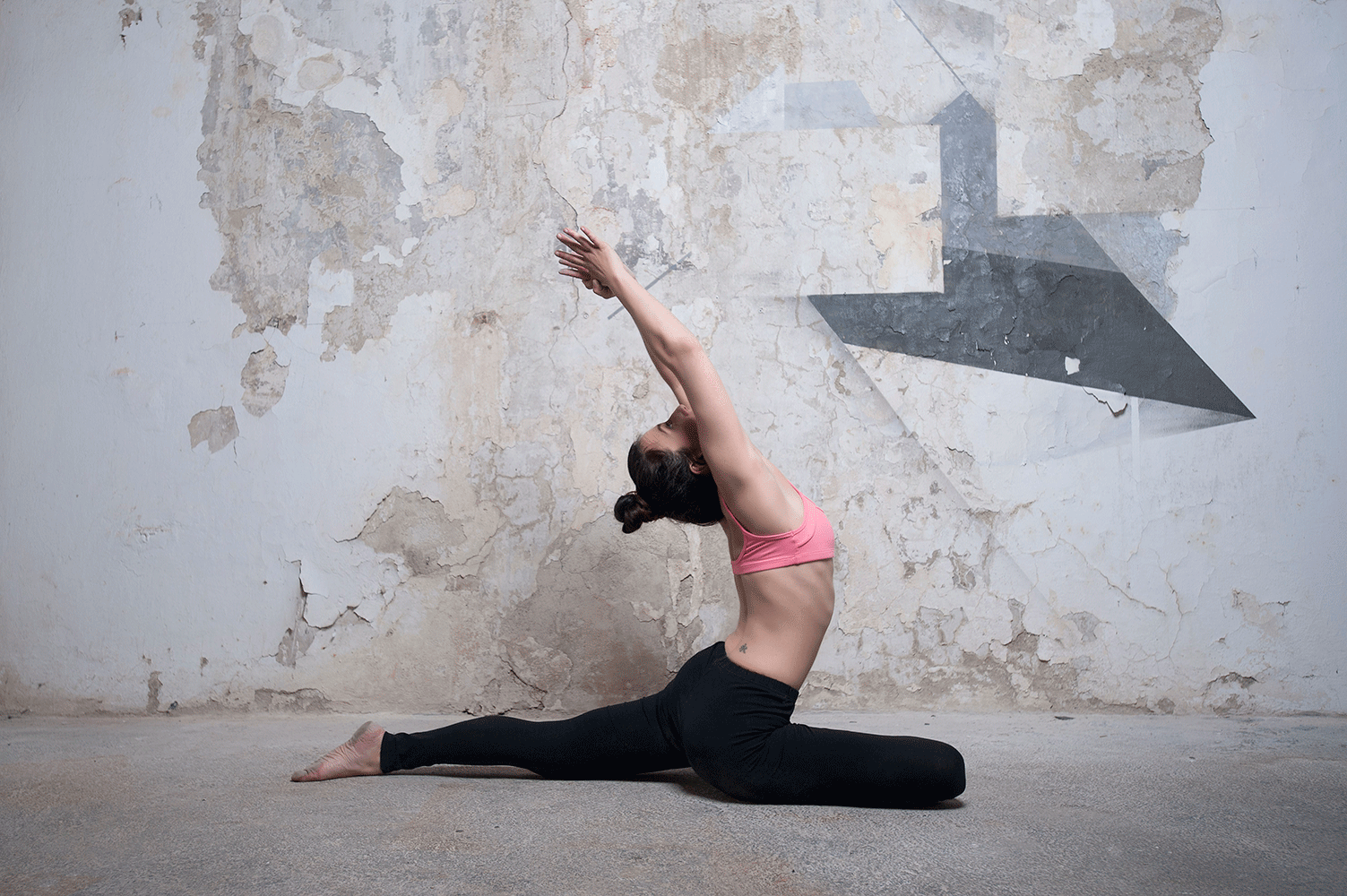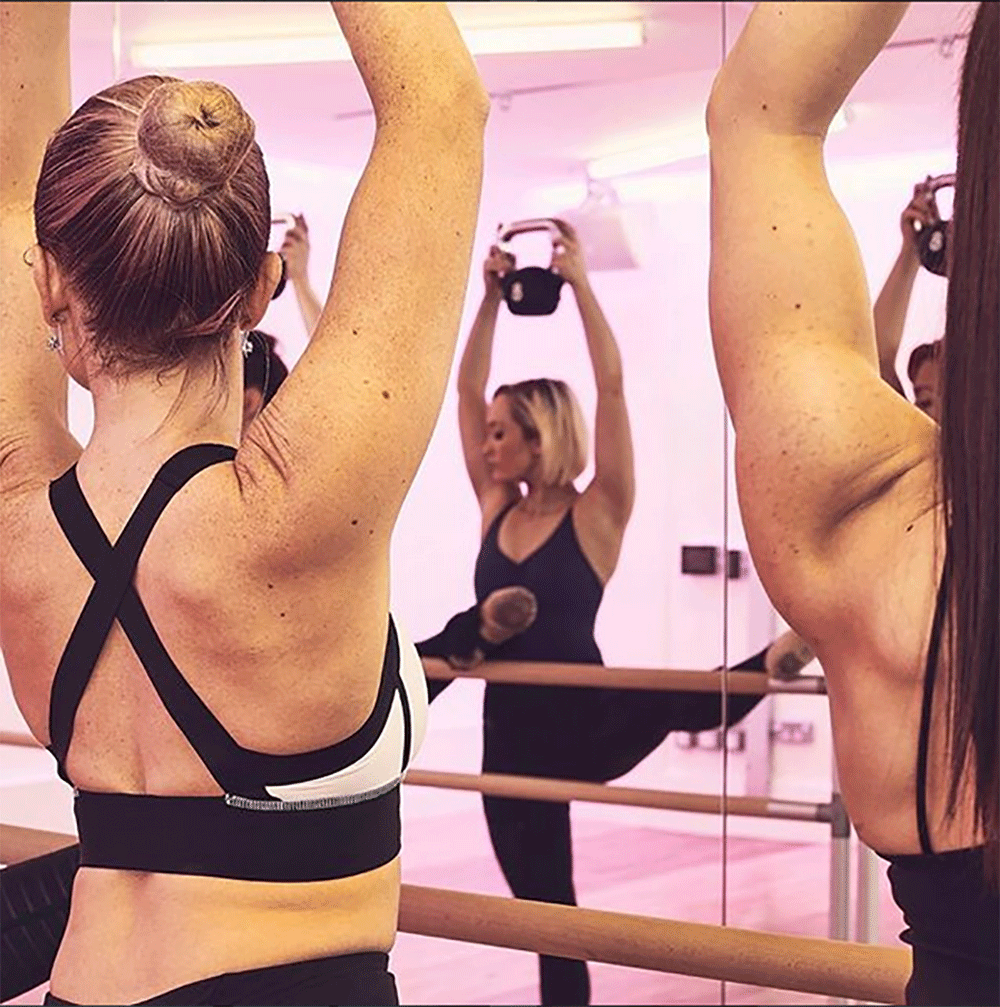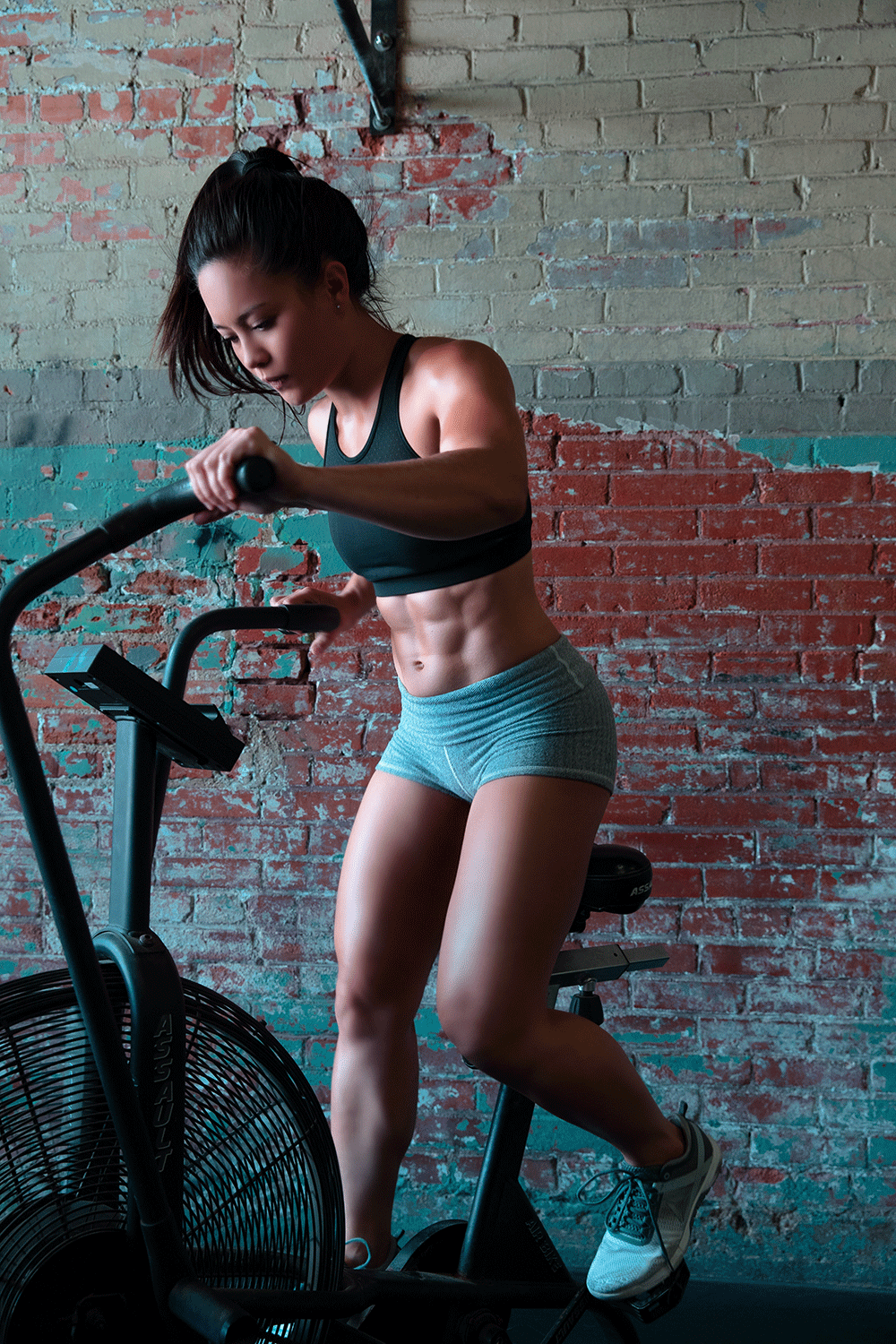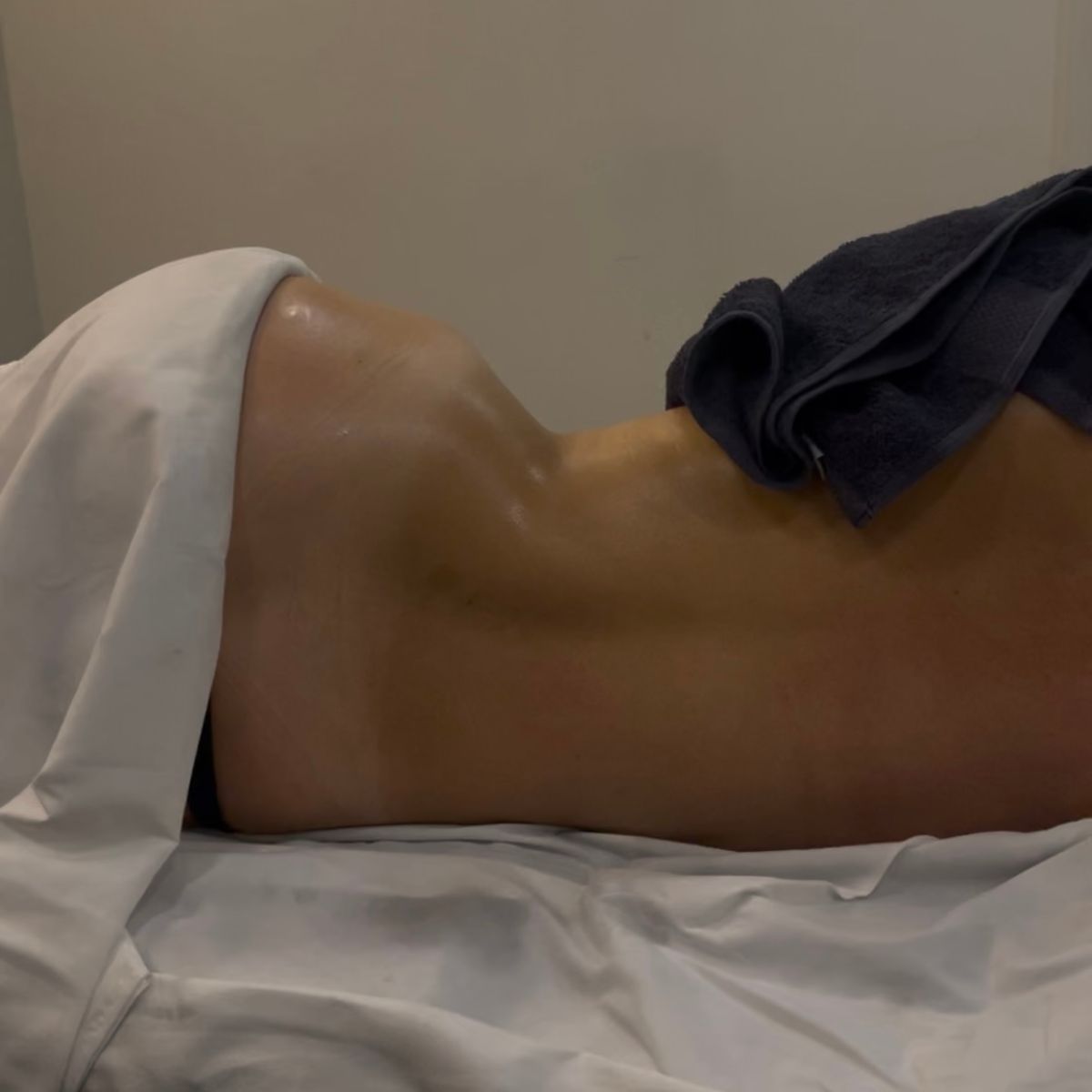The only two workouts you need to do in 2018
Fitness 2018 is all about streamlining your regime with two complementary workouts, says Jessica Salter
Fitness 2018 is all about streamlining your regime with two complementary workouts, says Jessica Salter
'Fitness collabs' are officially a thing and they are about to dominate everything that is fitness 2018. It's a trend that, incidentally, began over our family dinner table 15 years ago. Listening to a tense debate between our mum and aunt about which workout was better for you – yoga or Pilates – my brothers and I sniggeringly invented what we thought was the perfect solution: yogalates. It would combine the core-improving benefits of Pilates with the breathing of yoga… Little did we know how ahead of the curve we were.
Fast forward to fitness 2018 and I’m gripping hold of a barre, trying to plié while lifting a 4kg kettlebell. The combination of swinging it and attempting a graceful ballet move means I’m unthinkingly ‘zipping up’ my core and building my, ahem, guns of steel. I’m a multitasking fitness machine, which is exactly why the latest trend for combination classes has taken off. We know we’re meant to do cardio, resistance training and some kind of stretch class but, frankly, who has time to schedule them all in? But we should, because pairing opposing workouts is far more effective.
‘Studies suggest that a combination of strength and endurance training in one session can result in exactly the same fitness gains as you’d get from two separate sessions,’ says Dr Amal Hassan, who specialises in sports and exercise medicine. She explains that it’s down to increased capillarisation (higher numbers of small blood vessels within the muscle) supplying more oxygen, hormones and energy to exercising tissues. Hassan adds, ‘Even once-weekly combination sessions can improve strength, power and endurance more than twice-weekly resistance or endurance sessions on their own.’ Great news for the time-poor.
Fitness 2018: Yoga X Running

You might think the two tribes wouldn’t meet: PB-orientated runners and hippie yogis channelling their ‘flow’. But, actually, the most forward-thinking running clubs, like Arise in east London and the Keighley & Craven Athletics Club in Yorkshire, now offer yoga sessions after their runs. It makes sense – together the workouts tackle flexibility, strength and mental focus. Chris Miller, a trained biologist, as well as a personal trainer and yoga instructor, is a runner himself, but knows its limitations. ‘Running is a repetitive action and the muscles only work in one plane of motion, so often you see hip flexors, hamstrings and quad muscles that have become tight,’ he says. And while a sore thigh might be something you can live with, Miller says there are other problems. ‘The body is a kinetic chain, where each link affects those around it. That bad back you’ve had could be caused by tight hamstrings, which stop you from hinging correctly at the hip joint, preventing you from folding over correctly.’ Similarly, knee pain could be caused by inactive glutes or a tight iliotibial band (the ligament that runs down the outside of the thigh, from hip to shin, helping to stabilise the knee joint).
Step forward the fitness 2018 complementary yogic practice. Not only will it help stretch out those sore muscles – pigeon pose is good for glutes, although ensure you warm up first – but it can also strengthen the muscles used for running, too. And, studies show, yogic breath work can increase lung function, thereby improving running endurance.
‘I’m terrible at stretching after a run, so I schedule in yoga once a week,’ says Susie Chan, 42, an endurance runner. ‘I’ve noticed that I stay injury-free for longer, because whenever I get out of the habit of yoga, that’s when I pick up niggles.’ There are mental benefits,too – as well as the focus that yoga demands, we underestimate the power of chill time for our stress hormones. ‘When you regularly run more than 5k, your cortisol [stress hormone] starts to rise,’ says Miller. ‘But you can calm your cortisol levels by finding more balance, and a yoga session is perfect for that.’
Marie Claire Newsletter
Celebrity news, beauty, fashion advice, and fascinating features, delivered straight to your inbox!
Fitness 2018: Swimming X HIIT
Two years ago, I signed up for the New York City Marathon with five months to train – a nervously tight schedule for someone who’d never done one before. The next day, I sprained my ankle, leaving me on crutches and unable to run. How was I going to train now? The answer was HIIT in the pool – the perfect equation for low-impact cardio. My instructor had me sprinting in the pool – yes, literally running underwater – aka aqua jogging. Sure, it was embarrassing, but I was too out of breath to care. According to research by Virgin Active, due to hydrostatic pressure on the body, exercising in water reduces your heart rate by up to 10-15 beats per minute compared to similar exertions on dry land. It means you can work harder than you would in the gym. And, because of the buoyancy, the water reduces the impact on your joints by up to 85 per cent. So, my ankle was able to recover slowly without me missing training.
But it’s not just for those recovering from injury. According to research by Speedo, swimming for 30 minutes is as effective in terms of cardiovascular output, muscular development and calorie burn as an hour’s land-based workout. Of course, a sedate breaststroke isn’t going to cut it; you have to go for the burn to bring in the HIIT. The best time to do this is after work; researchers from the University of North Texas found that people performing HIIT had a greater workout capacity at night.

Fitness 2018: Dance X Weights
Zumba might be fun but, for best results, a combination of weights and cardio is ideal for optimum weight loss and muscle gain, according to research from Penn State university in Pennsylvania. Worried about bulking up? Don’t be: Royal Ballet dancers routinely use weight training alongside ballet class – they even have a weights room in the gym on site at the Royal Opera House. But it’s crucial that you maintain form as you lift. Last year, professional dancer Natasha Volley injured herself while busting out a gruelling session on the leg-press machine. Out of action for a year, she decided to devise a routine to get herself back to strength, inspired by a physio who was rehabilitating injured ballet dancers using ballet and kettlebells. ‘I wanted to get strong again without injuring myself further,’ she says. It worked, and her resulting programme is now a class called Barrebells at GymBox, where she says her clients have seen dramatic results – more definition in the waist, arms and legs – in the last six months.
The beauty for us non-dancers is that the ballet element teaches you to activate your core. A plié, for instance, sees the dancer elongating their body even as they sink into the squat. ‘Dance encourages you to stretch up and out, and to protect the body. Whereas in the gym, you see people slightly hunched, because they’ve overworked their hamstrings and the muscles end up short,’ says Volley.
And the benefit of using kettlebell drills is that the uneven weight means you train your fast twitch muscle fibres (used for short bursts of energy), which increases your strength, without bulking up. Jayne Robinson, 32, was doing dance classes five times a week. ‘My overall fitness was good, but I didn’t have a strong frame and I struggled to tame the dreaded muffin top,’ she says. Eight months ago, she started going to Frame Lift at the boutique gym Frame in London, which incorporates weights as well as dance, and has reduced her classes to two to three per week, while seeing huge differences in her body. ‘The idea of weightlifting was foreign to me, but I can’t believe how much my body changed. I now have definition in my arms and I’m more aware of my posture.’
Want to maximise your results further? Some studies show that its best to lift first and do cardio afterwards.
Fitness 2018: Crossfit X Pilates
One tribe of gym-goers who already worship at the altar of weightlifting are the CrossFitters who, according to a study by the National Center of Medicine and Science in Sports in Tunisia, should lift first thing in the morning for maximum gains. But they often need to work on their flexibility and core strength – not just the visible six-pack. Notorious for its rate of injury, researchers at the University of Rochester in New York found that around 20 per cent of CrossFit athletes get injured. Pilates instructor Rachel Stephenson says lots of these injuries could be prevented by adding in Pilates. ‘It helps you to understand the optimal weight bearing positions of the spine and pelvis (it should be neutral) and transfer this to the CrossFit floor,’ she says. As a recent convert to CrossFit, Stephenson has created a mash-up class of the two exercises. But how can you do it at home? Make sure you activate your glutes before you lift. ‘Work them and your hamstrings by doing the Pilates bridge,’ she says. ‘Point your tail bone towards the back of the knees and the pubic bone towards your lower ribs, then rise up.’
One final fitness 2018 combo you should try is meditating before your workout. A recent study found that this is more effective at reducing the symptoms of depression and anxiety than doing them separately. And a timely reminder that fitness collabs are as much for your mind as for your body.

Fitness 2018: classes to try this year
Still not sure what exercises to pair up? Here are some double-dose classes you can hit today
Barrebell
Improve your posture with ballet-barre moves, while building muscle with kettlebell swings in this 45-minute class at Gymobox. Tutu, optional
HIIT x Pilates
PT Hollie Grant combines the best of HIIT and Pilates in an eight-week online course to improve cardio and muscular fitness.
Hydro
Prepare yourself for timed sprints, swimming lengths just using your arms and aqua jogging to burn around 500 calories in one pool-based session in this class developed by Speedo. Available at Virgin Active clubs, nationwide.
Piloxing
Combining the body-sculpting benefits of Pilates and aggression-busting effects of boxing, popular in New York, this has found its way to studios all over the UK.
The leading destination for fashion, beauty, shopping and finger-on-the-pulse views on the latest issues. Marie Claire's travel content helps you delight in discovering new destinations around the globe, offering a unique – and sometimes unchartered – travel experience. From new hotel openings to the destinations tipped to take over our travel calendars, this iconic name has it covered.
-
 I tried Sofia Grainge’s go-to lymphatic drainage massage - and the results were astonishing
I tried Sofia Grainge’s go-to lymphatic drainage massage - and the results were astonishingThe results go way beyond aesthetics.
By Ashleigh Spiliopoulou
-
 My dry skin loves a tinted moisturiser in the summer months—this one is *outstanding*
My dry skin loves a tinted moisturiser in the summer months—this one is *outstanding*It ticks the boxes for coverage and nourishment
By Matilda Stanley
-
 I was overusing (and wasting) my skincare products until a dermatologist taught me this trick
I was overusing (and wasting) my skincare products until a dermatologist taught me this trickLess slathering, more targeting.
By Darcy Brown